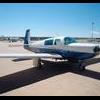EDM930 vs MVP-50
-
Members Online
- clh
- 231MJ
- Raistlin
- Guy123
- buddy
- ArtVandelay
- atpdave
- IvanP
- Zulee
- MikeOH
- AJ88V
- Bike_rider
- Fly Boomer
- TheAv8r
- AH-1 Cobra Pilot
- outermarker
- phrogpilot73
- 1980Mooney
- mooneyfun
- Todd1
- Van Lanier
- TCC
- MDMooney
- eman1200
- Echo
- Ameadows82
- 00-Negative
- Derek449
- lanejacobs84
- PT20J
- 201er
- mooneydemi
- Hank
- KSMooniac
- cruiserflyer
- Pinecone
- ElkoRandy20J
- GeeBee
- ta2too


Recommended Posts
Join the conversation
You can post now and register later. If you have an account, sign in now to post with your account.